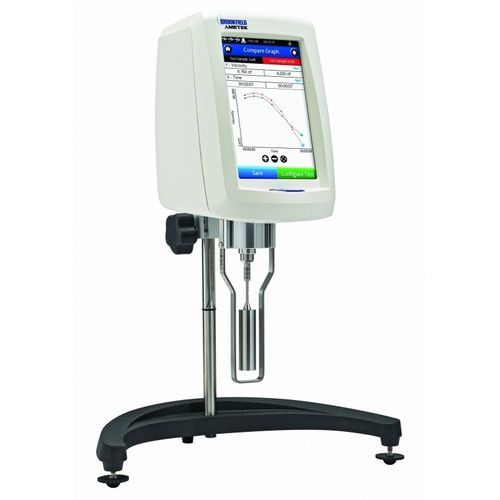
Laboratory rheometer DVNextfor the food industry

Add to favorites
Compare this product
fo_shop_gate_exact_title
Characteristics
- Applications
- laboratory, for the food industry
Description
The DVNext Rheometer is Brookfield’s latest model that incorporates new advanced features that our customers have been asking for with the repeatability and reliability you expect from us. It is an easy-to-use, stand-alone instrument for measuring viscosity and yield stress. It's available in a Standard version and a 21 CFR Part 11 Compliant version.
FEATURES & BENEFITS
Standard Version
Digital Leveling
Start-up Wizard
Gel-Timer Functionality
Optional Magnetic Coupling Attachment (replaces EZ-lock)
Optional Bar Code Scanner
Compliant Version
Hand-held Scanner for Bar Code Detection
Accessory Detection with Bar Code Detection
Magnetic Coupling Attachment (replaces EZ-Lock)
Compliance to 21CFR Part 11 in Stand-alone and GAMP Compliant
Ethernet Connectivity
LIMS Connectivity
Printing to non-editable PDF
Each of our standard Laboratory Viscometers/ Rheometers are supplied with an internal spring used to calculate the viscosity of a material. These springs have different measuring capabilities:
LV is for low viscosity materials and can measure the thinnest materials. Typical examples include inks, oils, and solvents.
RV is for medium viscosity materials than those measured with an LV torque. Typical examples include creams, food, and paints.
HA is for higher viscosity materials than those measured with an RV torque. Typical examples include gels, chocolate and epoxies.
HB is for even higher viscosity materials than those measured with an HA torque spring. Typical examples include asphalt, caulking compounds, and molasses.
VIDEO
Catalogs
No catalogs are available for this product.
See all of Brookfield‘s catalogsRelated Searches
- Laboratory analyzer
- Control analyzer
- Environmental analyzer
- Moisture analyzer
- Electronic moisture analyzer
- USB analyzer
- Benchtop moisture analyzer
- Viscosity meter
- Laboratory viscometer
- Rheometer
- Fluorescence analyzer
- Laboratory rheometer
- Mercury analyzer
- Viscometer for the food industry
- Air quality analyzer
- Automatic viscometer
- Rotary rheometer
- Rheometer for the food industry
- Automatic rheometer
*Prices are pre-tax. They exclude delivery charges and customs duties and do not include additional charges for installation or activation options. Prices are indicative only and may vary by country, with changes to the cost of raw materials and exchange rates.








